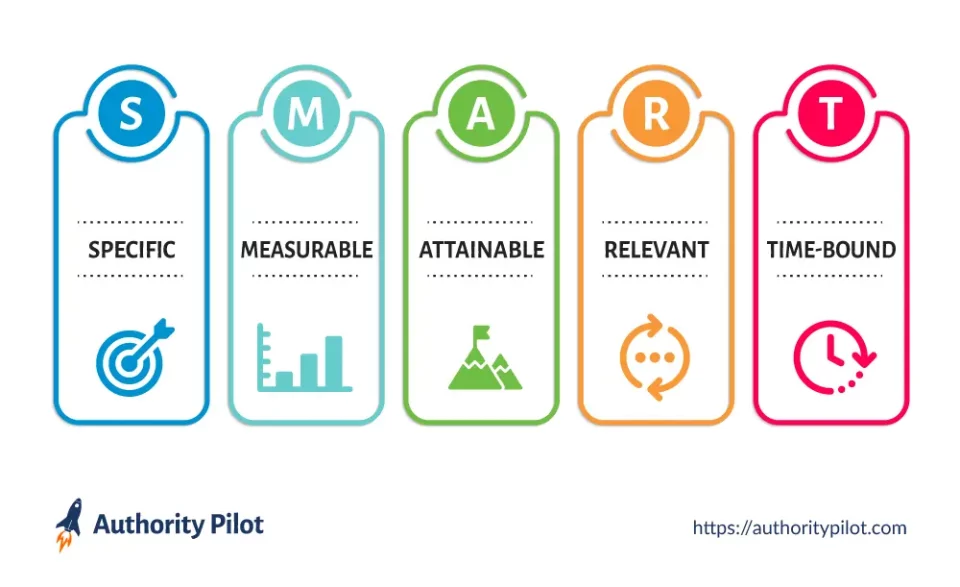
Are you struggling to make your automotive PPC strategy stand out online? You’re not alone. Many marketers find it challenging to recapture the attention of potential customers in a market where every click and impression counts. The key to success lies in effective remarketing strategies. We understand this frustration and are here to guide you on how targeted remarketing can not only re-engage past visitors but also turn them into loyal customers. For more insights and strategies, take a peek at Authority Pilot’s Car Dealer PPC page. And if you haven’t already, check out related automotive PPC agency insight with Tuning ROI for Car Dealer PPC Advertising. OK, let’s get this remarketing party started!
Understanding Remarketing
Remarketing is like getting a second chance to impress someone who’s already shown interest in what you offer. Think of it as reaching back to people who visited your website but didn’t buy anything. The goal? To remind them about your products and hopefully, this time, they’ll make a purchase.
The main idea behind automotive PPC remarketing is pretty straightforward: focus on people who already know your brand. It’s different from regular marketing, which tries to attract new people. Remarketing is more personal. It uses information from people’s previous visits to show them ads that are more likely to catch their interest.
So, in simple terms, while traditional marketing is like shouting in a crowded room hoping someone will listen, remarketing is more like having a friendly one-on-one chat with someone who already showed interest in what you have to say. This makes it a powerful tool, especially in the automotive world, where catching and keeping customer attention is key.
The Automotive Market Landscape
The way vehicles are marketed is changing fast, and it’s actually pretty exciting for geeks like us at an automotive ppc agency! Nowadays, everything is going online. Car companies are making cool online showrooms and interactive tools so people can check out cars from their homes. This move to digital is all about making car shopping fun and engaging for everyone.
Social media is also a big deal in the car world. It’s not just about showing off the latest models, but also about building a community and sharing stories. This helps car brands connect with people on a more personal level.
However, there are some challenges too, especially when it comes to Pay-Per-Click (PPC) ads. The car market is really competitive, so standing out online can be tough. It’s not just about having creative ads; you need to understand what your customers are looking for.
Another challenge is keeping up with how customers’ choices are changing. People today know a lot about cars before they even talk to a dealer, and they care about things like technology and the environment. So, making ads that speak directly to what people want is super important.
Lastly, staying up-to-date with all the latest online marketing tools can be hard but is beneficial. The online landscape continues to evolve, with new ways to reach customers popping up all the time. Car businesses need to keep learning and adapting to stay ahead in the game.

Talk Strategy with a Fractional CMO
SEO. More SEO traffic with higher conversion rates.
Paid Media. Paid strategies with clear ROI.
Content. Epic content that attracts and gets shared.
Core Principles of Effective Remarketing
When it comes to remarketing and your automotive PPC strategy, two key principles can really make a difference: personalization and the right timing and frequency of your ads.
Personalization: Tailoring the Message
Imagine you’re having a conversation with friends about cars. You wouldn’t repeat what you said to someone else each time, right? You’d talk about what interests them specifically. That’s personalization in a nutshell. In remarketing, it’s about creating messages and ads that feel like they’re made just for the person seeing them. This could mean showing ads for the exact model of car someone was looking at on your website, or offering a special deal on a service they’ve used before. It’s all about making your audience feel understood and valued. Personalization makes your message stand out and increases the chances that someone will come back and make a purchase.
Timing and Frequency: Getting It Just Right
Timing and frequency need to be just right to create a good experience. You don’t want to overwhelm your audience with too many ads too quickly, but you also don’t want to wait so long that they forget about you. Striking the right balance is key. This might mean showing your ad a few times over the first few days after someone visits your site, then spacing them out a bit more as time goes on. The goal is to stay present in their mind without being annoying. It’s a delicate balance, but when done right, it can lead to great results in bringing customers back to your site.
Successful remarketing with automotive PPC hinges on how well you know your audience and how tactfully you re-engage them. Personalization makes your audience feel special, while the right timing and frequency ensure you’re there at just the right moment. Together, these principles form the foundation of a remarketing strategy that’s not only effective but also respectful and engaging for your customers.
Remarketing Strategy Tips from an Automotive PPC Agency
Creating a successful automotive PPC strategy for remarketing involves knowing who you’re traveling with [your target audience] and where you want to end up [your objectives].
Identifying Target Audiences: Knowing Your Travel Companions
The first step is to identify your target audiences. These are the groups of people who have already shown some interest in what you offer. Maybe they visited your website to check out a new car model or clicked on an ad about your automotive services. Understanding these groups is crucial to an automotive PPC strategy. Think about their preferences, behaviors, and needs. Are they first-time car buyers or seasoned automobile enthusiasts? Do they care more about vehicle performance or eco-friendliness? Knowing this helps you create messages that feel like they’re speaking directly to each person’s interests and needs.
Setting Clear Objectives: Plotting Your Destination
Once you know who you’re talking to, it’s time to set clear objectives for your automotive ppc strategy. What do you want to achieve with your remarketing campaign? Maybe you want to increase online sales of a particular car model, or perhaps your goal is to get more people to sign up for test drives. Your objectives could also include boosting brand awareness or promoting a special offer. Whatever your goals, they should be specific, measurable, achievable, relevant, and time-based (SMART). This clarity will guide your efforts and help you measure the success of your campaigns.

In essence, developing a strong automotive PPC strategy for remarketing is about understanding who you are reaching out to and what you hope to achieve. By focusing on these elements, you can create a tailored approach that resonates with your audience and drives them towards the actions you want them to take. It’s about making your marketing efforts count by targeting the right people with the right message at the right time.
Leveraging Data for Precision
For an automotive PPC agency like Authority Pilot, data isn’t just numbers and graphs; it’s the compass that guides successful strategy. Let’s explore why data analysis is so important and look at some tools and techniques that can help.
Data analysis gives you insights into what your customers are doing, what they like, and what might make them click that ‘buy’ button. By looking closely at data from your website, social media, and past PPC campaigns, you can understand patterns like when people visit your site, which car models they’re interested in, and even what kind of offers might entice them. This information is invaluable because it helps you make informed decisions. Instead of guessing what might work, you can use real data to tailor your remarketing efforts in a way that resonates with your audience.
Tools and Techniques: Your Data Analysis Toolkit
Now, let’s talk about some tools and techniques that can help you leverage data effectively.
- Analytics Platforms: Tools like Google Analytics are essential. They provide a wealth of information about website traffic, user behavior, and campaign performance. You can see which pages your visitors spend the most time on, which ads are getting clicks, and much more.
- Customer Relationship Management (CRM) Systems: These are great for understanding your existing customers. CRMs can track customer interactions, purchases, and preferences, giving you a clear picture of who is buying from you and why.
- Remarketing Tools: Platforms like Google Ads and Facebook Business offer remarketing options that allow you to target past visitors with specific ads. These tools can use your data to show ads to people who visited certain pages or performed specific actions on your site.
- A/B Testing: This is a technique where you compare two versions of an ad or a webpage to see which performs better. It’s a direct way to use data to refine your approach.
Using these tools and techniques, you can turn data into actionable insights. This precision in understanding and targeting your audience can significantly increase the effectiveness of your remarketing and overall automotive PPC strategy. Every customer’s vehicle preferences can be unique, so this level of precision is essential. With data as your guide, you can create more personalized, effective, and successful marketing strategies that resonate with your audience and drive conversions.
Creative Aspects of Remarketing
For an automotive PPC strategy like remarketing, making your ads stand out is super important. Let’s talk about how to make ads that really grab attention and send messages that connect with people.
Designing Engaging Ads: Making Them Look Great
Your ad should be like a window display that makes people stop and look. Use beautiful pictures of cars that show off how great they look. Make sure your ad is neat and clear, with colors and fonts that feel like your brand. Adding fun things like interactive views of the car can also make people more interested. The main idea is to make your ad so interesting that people want to click on it.
Crafting Compelling Messages: Talking to People’s Hearts
After you get their attention, your words should keep them interested. Talk about things that matter to them. If they’re looking for a family car, mention how safe and roomy it is. For luxury cars, talk about how fancy and fast they are. It’s all about understanding what your audience likes and talking about that in your ads. And don’t forget to tell them what to do next, like “Book a Test Drive” or “Learn More.”
In short, making creative ads for cars is about two things: making them look awesome and saying the right things to get people interested. It’s like a mix of art and knowing what your customers want. By doing this well, you can make ads that not only look good but also really connect with people and encourage them to buy.
Multi-Channel Approach
For an automotive PPC agency, it is understood that using a multi-channel approach can really boost remarketing. Let’s explore how integrating various platforms and adopting a holistic strategy can benefit your campaign.
Integrating Various Platforms: Covering All Bases
Using a multi-channel approach means spreading your remarketing efforts across different digital platforms. This could include:
- Social Media: Platforms like Facebook, Instagram, and Twitter are great for visually engaging ads.
- Email Marketing: Sending personalized follow-up emails to people who’ve shown interest in your products.
- Google Ads: Utilizing Google’s extensive network to display ads on various websites.
- YouTube: Creating engaging video content that can recapture the interest of potential customers.
By integrating these platforms, you create multiple touchpoints with your audience. It’s like having several roads leading back to your brand, each tailored to different segments of your audience.
Benefits of a Holistic Strategy
Here are some key benefits of adopting a multi-channel automotive PPC strategy for remarketing:
- Wider Reach: You can connect with a broader audience across different digital spaces.
- Consistent Branding: Presenting a unified brand message across all channels reinforces brand recognition.
- Customer Insights: Gathering data from multiple channels provides a more comprehensive view of customer behavior and preferences.
- Flexibility and Adaptability: Different platforms allow you to test and adapt different aspects of your campaigns for better results.
- Increased Engagement: Different formats (like videos, images, and emails) cater to various preferences, increasing overall engagement.
- Higher Conversion Rates: A multi-faceted approach often leads to higher conversion rates, as it re-engages potential customers in various stages of the decision-making process.
In essence, a multi-channel approach in remarketing means not putting all your eggs in one basket. Instead, it spreads your message online, ensuring that your brand remains visible and engaging to your audience. This comprehensive automotive PPC strategy not only increases your chances of reconnecting with potential customers but also strengthens your overall brand presence in the competitive automotive market.
Budgeting and ROI Optimization
Managing your budget effectively and measuring the success of your automotive PPC strategy are crucial steps in automotive remarketing. Let’s break down how to allocate resources efficiently and measure success to ensure the best return on investment (ROI).
Allocating Resources Efficiently: Smart Spending
Think of your marketing budget as a pie. You want to slice it in a way that each piece – whether it’s for social media, Google Ads, or email marketing – is just the right size to give you the best results. Here’s how to do that smartly:
- Prioritize High-Performing Channels: Put more resources into platforms where you’ve seen good results. If Facebook ads are bringing in lots of leads, consider increasing your budget there.
- Test and Learn: Try different strategies with a small portion of your budget. Keep what works and change what doesn’t.
- Use Data to Guide Decisions: Look at your data to see where your money is going and what it’s bringing back. This will help you spend more efficiently.
Measuring Success: Keeping Track of Your Goals
To know if your remarketing is working, you need to track your success. Here are some ways to do that:
- Conversion Rate: How many people who clicked on your ads actually ended up buying something or taking the desired action?
- Cost Per Acquisition (CPA): How much are you spending to get one customer? This helps you understand if you’re spending too much for too little return.
- Return on Ad Spend (ROAS): This is how much profit you make for every dollar spent on advertising. It’s a key indicator of how effective your campaigns are.
- Customer Lifetime Value (CLV): Understanding how much a customer is worth in the long run can help you decide how much you should spend to attract them.
Remember, the goal is to make sure every dollar you spend on your automotive PPC strategy brings as much value as possible. By carefully allocating your resources and regularly measuring the outcomes, you can fine-tune your strategies to maximize ROI. This approach ensures that your automotive remarketing efforts are not only effective but also cost-efficient, driving your business towards greater profitability and success.

Talk Strategy with a Fractional CMO
SEO. More SEO traffic with higher conversion rates.
Paid Media. Paid strategies with clear ROI.
Content. Epic content that attracts and gets shared.
Automation in Remarketing
Embracing automation, especially with AI and machine learning, is like having a super-smart assistant in your automotive remarketing efforts. Let’s explore how these technologies are changing the game and see some real-world examples of automation in action.
The Role of AI and Machine Learning: Smart Helpers
AI (Artificial Intelligence) and machine learning are like the brains behind a more efficient and effective remarketing strategy. Here’s what they do:
- Personalized Recommendations: These technologies analyze heaps of data – like past browsing behavior or purchase history – to suggest which cars or offers might appeal to each customer.
- Optimizing Ad Performance: AI can test different versions of your ads, learning over time which images, messages, or formats work best for different audiences.
- Predictive Analytics: Machine learning helps predict future trends based on past data. It can foresee which types of cars might become popular or which marketing strategies might work best.
Examples of Automation in Action
Now, let’s look at some practical examples of how automation is used in an automotive PPC strategy like remarketing:
- Automated Email Campaigns: Imagine someone looks at a car on your website but doesn’t buy it. AI can automatically send them an email later, reminding them of the car with a personalized message.
- Dynamic Ad Creation: AI tools can create ads in real-time, tailored to the viewer. If someone has been looking at family cars, the ad they see will feature those types of vehicles.
- Chatbots for Customer Service: Chatbots, powered by AI, can handle basic customer queries on your website. This frees up your team to focus on more complex tasks.
In summary, automation – particularly through AI and machine learning – is revolutionizing the way an automotive PPC agency does remarketing. That is something worth emulating for your business. It’s not about replacing the human touch but enhancing it with smarter tools. By automating certain aspects of your campaigns, you can deliver more personalized, effective advertising, and provide better customer experiences, all while saving time and resources.
Compliance and Privacy Considerations
When you’re remarketing in the automotive industry, it’s important to follow the rules and be respectful of customer privacy.
Staying Within Legal Boundaries: Knowing the Rules
Just as there are traffic laws, there are rules about how people’s personal information can be used. These laws are there to protect everyone’s privacy. Here are a few key points:
- Ask Permission: Always make sure to get permission from people before you use their information. You can do this with simple forms on your website.
- Be Clear and Open: Tell your customers what information you’re collecting and how you’ll use it. No secrets or tricky words.
- Stay Updated: Laws can change, so it’s important to keep up with the latest rules about data privacy.
Ethical Marketing: Being Respectful and Honest
Being ethical in your marketing means more than just following laws. It’s about treating your customers well and earning their trust. Here are some tips:
- Always Tell the Truth: Make sure your ads are honest. Don’t make false promises about your cars.
- Respect People’s Choices: If someone doesn’t want to receive your ads anymore, respect their decision right away.
- Don’t Overwhelm People: Sending too many ads can be annoying. Ad frequency leaves an impression.
Case Studies: Successful Automotive Remarketing Campaigns
Let’s look at some real examples of great car remarketing campaigns to see what worked for them and what we can learn.
Example 1: Luxury Car Campaign
A luxury car brand made a special campaign for people who looked at their cars online but didn’t buy anything. They showed these people ads with beautiful pictures of the cars they liked and offered special deals for a short time.
Takeaways:
- Personal Touch. Making ads that talk about what each person likes really helps.
- Special Offers. Giving people a special deal for a limited time makes them want to buy sooner.
- Great Pictures. Image quality grabs people’s attention.
Example 2: Family Car Campaign
A brand known for family cars used social media to reach people who had seen their ads before. They shared stories from other customers, talking about how safe and spacious their cars are.
Takeaways:
- Stories Connect. Sharing real stories from customers can really touch people’s hearts, especially families.
- Focus on What’s Special. Talking about what makes their cars great, like being safe and having lots of room, was a big hit.
- Social Media is Powerful. Using social media was a smart move because lots of people could see and interact with their ads.
Overall Lessons:
From these examples, we see that:
- Knowing Your Customers is Key. Understanding what your customers want and like is super important.
- Stories are Strong. Telling stories in your ads can make a big impact.
- Try Different Things. Mixing up your strategies, like using personal touches, stories, and special offers, can work really well.
In short, these real examples show us that understanding your customers, using stories, and mixing different ways of advertising can make your car ads really successful. By learning from what others have done, you can make your own campaigns better and more appealing to the people you want to reach.
Future of Automotive PPC Strategy and Remarketing
Thinking about the future of car ads and remarketing is pretty exciting! There are some cool trends on the horizon and ways we can get ready for what’s coming.
Upcoming Trends:
- More AI Use. Artificial Intelligence (AI) will be used even more to make ads smarter and more personalized.
- Voice Search. As people use voice commands more to search online, car companies will need to make their ads work well with how people talk.
- Augmented Reality (AR). Imagine using your phone to feel like you’re test driving a car! AR might make this possible and more fun.
- Eco-Friendly Focus. There will probably be more ads talking about how cars are good for the environment, as people care more about this.
Getting Ready for Changes:
- Stay Updated and Adaptable. The key to keeping up is to always be learning and ready to change your strategies. The digital world changes fast, so you have to stay in the loop.
- Invest in New Tech. Embrace new technologies that can help make your ads better, like tools for analyzing data or creating cool digital experiences.
- Put Customers First. No matter what new things come up, making sure your customers have a great experience is always important. Happy customers mean good business.
The future of car advertising and remarketing looks like it’ll be full of new tech and changes in what people care about. By keeping up with these trends and using new tech smartly, car companies can be ready for an exciting future.
Conclusion
And that’s a wrap on our trip through automotive PPC strategy and remarketing! Let’s quickly remember the important stuff: Make your ads feel personal, so people feel like you really get them. Timing is everything – don’t overdo it with too many ads, but don’t be too quiet either. Use different ways to reach people, like social media and emails, and always be respect people’s privacy. Don’t forget that smart tech like AI can really help, and always be ready for what’s coming next. Most importantly, always think about what your customers want and need. By keeping these tips in mind and always being open to new ideas, you’re all set for a great journey with an effective automotive PPC strategy with remarketing.
Ready to take your business to the next level? Check out our services for Google Ads Management and Social Media Ads Manager. You might also book a strategy call and speak with an expert to turbocharge your marketing journey! 🚗💨🌟







